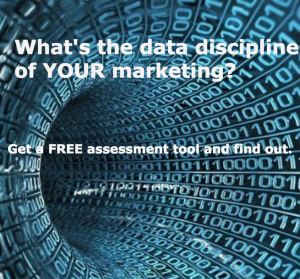Since content is so critical to marketing and sales, it begs the question: how can you use data to understand what content resonates with your audience? Here are eight considerations for you and your team:
- How are you segmenting your content?
Segmentation, one of the golden oldies of the marketing profession, applies to content. It’s important to not only know what content speaks to your paying customers, but also to the “tire kickers” you can engage to start doing business with your company. But instead of looking at macro level stats among prospects, it helps to drill down with meaningful metrics among specific segments. For example, how  often do VIP prospects come back and revisit your website? What topics and what kind of content drove that behavior? The key is to segment your prospects who are at the beginning of the marketing funnel, e.g. new sign-ups to a newsletter etc. When your list is enriched with data (from third parties or internal sources), it is easier to create more meaningful segments and then you’ll be in a better position to engage high potential prospects with relevant content. One of our clients, a K-12 education company, had a “math concerned” segment. After gaining some data, we created a free math assessment tool that was part of a broader customer acquisition strategy and revenue gains soon improved by double digits.
often do VIP prospects come back and revisit your website? What topics and what kind of content drove that behavior? The key is to segment your prospects who are at the beginning of the marketing funnel, e.g. new sign-ups to a newsletter etc. When your list is enriched with data (from third parties or internal sources), it is easier to create more meaningful segments and then you’ll be in a better position to engage high potential prospects with relevant content. One of our clients, a K-12 education company, had a “math concerned” segment. After gaining some data, we created a free math assessment tool that was part of a broader customer acquisition strategy and revenue gains soon improved by double digits.
Content segmentation, of course, also applies to customers who are already on board, not just prospects. Many companies are connecting their CRM systems to their analytics software, so they can understand which topics resonate most among different customer groups with real granularity. This way they know the specific topics and types of content that are moving the needle (in terms of lead score, purchase frequency, recency, monetary value etc).
Ecommerce retailer Onward Reserve moved from a ‘batch and blast’ strategy to content segmentation that included best customers, non-purchasers and churning customers. The groups were sent the same basic emails but with different content and messaging that was tailored based on previous engagement with their website. They doubled their conversion rates and improved their average order value by 39% as a result.
2. Go predictive.
The content game is becoming more predictive.
Mashable uses data scientists to predict the likelihood of their content of going viral. Recently I had the pleasure of meeting Haile Owusu, Chief Data Scientist at Mashable. Owusu discussed how their approach to predicting content performance is similar to weather forecasting, the oldest data science in the world. They’ve gotten so good that within five minutes after a piece of content is published, they can predict the “velocity of sharing” with 75% accuracy and this number grows to 95% accuracy within 24 hours.
To do this Mashable looks not only at engagement with their own content, but also at content across the web. To feed their content models, every day they crawl 1 million different URLs and 5 million social data points.
Of course, not every company has the scale to justify this kind of investment. But predictive analytics are becoming attainable through cloud based tools, particularly with marketing automation. Kapost reports a 250 percent increase in ROI when marketers incorporate predictive analytics tools into lead scoring—and content is the fuel that drives engagement, which makes lead scoring possible. Some vendors even predict which keywords to use in content creation (based on analyzing traffic, conversions, SEO value and more).
3. On a budget? There’s always Google Analytics.
One of the advanced features of Google analytics is content grouping. This allows you to categorize your content into buckets, to better see what kind of topics and issues resonate most. Here are some uses:
- See the impact of short form content vs. long form content that has a higher word count.
- Group your content by author. Which authors drive the most traffic and revenue?
- Group your content by department of company. Are certain departments producing better content?
Google even built a tool called Content Experiments that helps you conduct A/B tests to see what content performs best. (Actually, well informed sources told me Google acquired some technology to make it, but still let’s give them some credit).
4. Headlines and Titles Matter.
I’m not advocating for salacious headlines that make for click bait. But carefully crafted headlines that capture the imagination can make a real difference. A media company I know of recently helped a client with a piece of custom content. The client’s headline was “Survey of State Tax Departments.” Their team suggested “How does Your State Tax Department Stack Up?” which was tested vs. the other headline. It resulted in a 146% increase in clicks.
5. Still not a believer? Consider Google’s Algorithm.
Not everyone is drinking the data-driven content Kool-Aid. But don’t we all want more traffic from search engines? It’s going back a while but remember this date: May 20, 2014. This day was when Matt Cutts, Google’s community liaison, tweeted that Google was rolling out Panda 4.0, an update to their ranking algorithm. Remember the companies that lost huge amounts of traffic? It was the content farms (sites that quickly generate and publish low-quality and thin content) that suffered the biggest losses.
When your content is more engaging Google will take notice. And when it’s not engaging they care. In particular….
- A high bounce rate can signal to Google that your visitors aren’t finding what they’re looking for on your site, or that they don’t consider your site to be very useful.
- If your site’s visitors only come to your site once, never to return, Google can take that fact to mean that your site isn’t all that relevant or useful.
6. Have Leadership from the Top
Building a data-driven content culture takes leadership from the top. And since marketers are “the new publishers” they can take some good lessons from the media and publishing world. Take Mashable for example. Pete Cashmore founded Mashable.com at age 19 and grew it to two million readers within 18 months. In an interview with Inc, his passion for the numbers was clear. “I would look at the stats everyday and say, “Have I beaten yesterday?” And almost everyday I would have beaten yesterday in terms of the number of people who were reading the site. So, that kind of kept me going.” With leadership from the top, Mashable’s audience exploded. Just a few years later and they had 45 million monthly unique visitors and 25 million social followers.
At Penton (now part of Informa), our data-driven content initiative was backed by the CEO and executive committee.
- We developed personal content dashboards for every editor in the company so every author could see the metrics for the content they created.
- We encouraged friendly competition and set up internal sessions where editors shared what works with their colleagues. This way, content creators weren’t just hearing a mandate from the ivory tower, they got helpful feedback from their peers.
- Performance was measured with common metrics on engagement across all of our 70+ brands, starting with benchmarks and goals for every brand.
Ultimately we began to shift the culture. Penton developed data products that created new revenue streams, grew the audience significantly and ultimately the company was acquired for $1.6 billion.
7. Get the Resources to Win
In order to win the content game, you need the resources to win. Outbrain, the content syndication platform, has multiple data scientists on staff whose job is to inform the content mix so that Outbrain’s content recommendations receive the maximum engagement. They are staffed up to win the data-driven content game. Who is on their team? Data scientists, engineers with experience in machine learning and even a VP of Recommendations.
If you don’t have – or can’t justify – the resources to handle it internally, there are outside communities of data scientists like Kaggle that offer a more cost-effective way to harness a ‘cognitive surplus’ of top data scientists.
And if you don’t have enough usage or scale for a big data project, there’s always the tried and true method: creating new accountabilities and roles in your organization centered around analysis.
8. Data-Driven Content Can Set Creativity Free, Not Limit It
Some content creators feel that the numbers can stifle their creativity. Most content people are creative souls who want their originality and perspective to shine through. I’ve been there personally (and wrote for the Wall Street Journal when I was twenty). Somehow, along the way though, I became more of a geek and learned that being driven by metrics does not necessarily imply a lack of creativity. On the contrary, it can provide helpful context and a framework to guide creativity in directions that bear the most fruit.
If you’d like to learn more about this topic, feel free to explore this article: 14 Types of Data that Can Boost Your Marketing and Sales
We also offer a Data Assessment that helps companies understand their gaps in what they know about their customers, prospects, competitors and marketing performance, with specific recommendations on how those gaps can be filled.
Feel free to ping me if you’d like to discuss.
Brad Mehl



